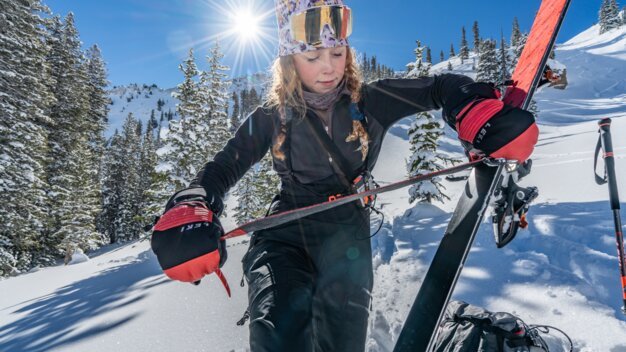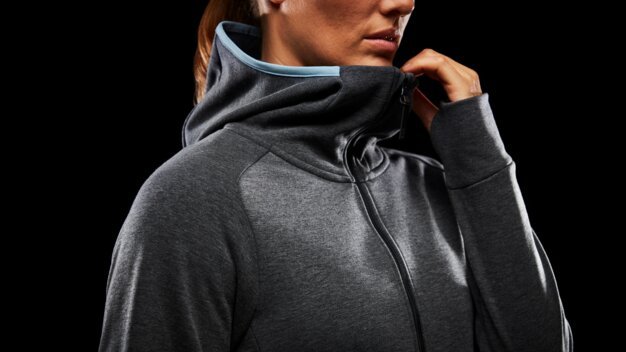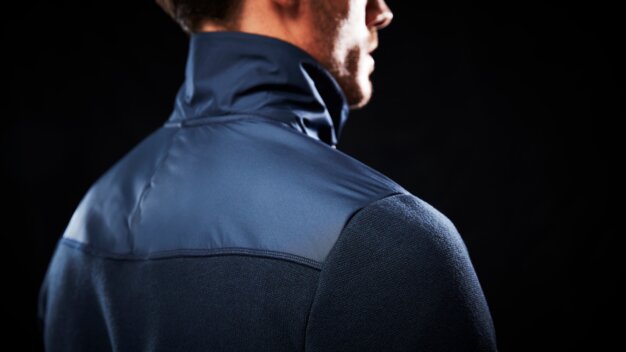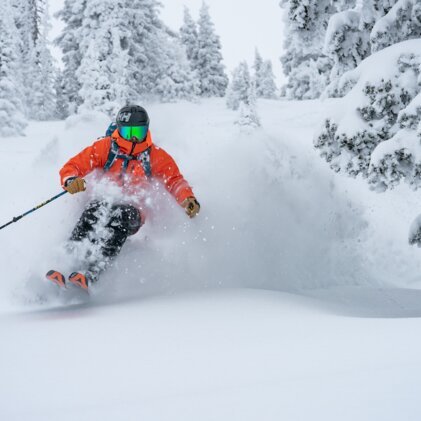
As a passionate winter sports enthusiast, it will be no secret to you: Dressing in layers is the key to staying warm and comfortable in the mountains. After all, layering allows you to remove or add individual layers of clothing as needed. What’s more, every layer has its purpose, making sure that you stay dry and toasty.
So, if your base layer is the root of a good layering system, and your outer layer protects you from the elements – what job does the mid layer do? Is it just a connecting element between the other two layers? Far from it!
Find out what a good mid layer can do for you and what to look out for when choosing one – presented to you by INTERSPORT Rent and Helly Hansen!
What is a mid layer?
As the name suggests, the mid layer is the “centrepiece” of your layering outfit.
Here’s a quick catchup:
A good layering outfit consists of …
- a base layer
- one or multiple mid layers
- an outer layer
Why is that? Because a day in the mountains can leave you hot and sweaty or cold and chilly (or anything in between), depending on the type of activity you engage in.
Simply put, the mid layer is the piece of clothing that goes between your ski underwear and your waterproof ski, touring or freeride jacket. So, if your base layer wicks away sweat, and your outer layer keeps out the wind and rain – what does your mid layer do? Well, the main job of your mid layer is to keep you warm.
A good mid layer …
- … retains body heat.
- … protects you from the cold.
- .. is breathable.
- … doesn’t weigh you down.
- … is very versatile.
Keep in mind: Your mid layer also needs to be moisture-wicking. If your mid layer can’t breathe, your whole layering setup won’t work!
Which types of mid layers are there?
As we said earlier, your mid layer’s main purpose is insulation. The more efficiently it retains the heat radiated by your body, the warmer you will feel. Nowadays, you can choose from a wide range of materials, both synthetic and natural, for your mid layer.
Merino wool
- is known as nature’s “super fibre”
- has anti-odour properties
- is very durable
- needs little washing
- offers great temperature regulation
- retains warmth when wet
- gets heavy when wet
- is fairly expensive
(Polyester) fleece
- is soft to the touch
- dries quickly
- is durable
- is very breathable
- stays warm when damp
- has excellent moisture-managing properties
- is not ideal for wet and windy conditions
- less compressible than softshell or down
Down
- offers excellent heat retention
- is extremely lightweight
- boasts some water and wind resistance
- retains its shape
- is highly compressible
- loses insulating efficiency when damp
- requires special cleaning
- is fairly expensive
Synthetic insulation
- retains its insulating ability when damp
- offers water- and wind-resistance
- is usually more affordable
- is not as compressible as down
- is not as durable
So which one’s best?
It depends – on you! Are you planning to do a ski tour on a warm spring day? Or are you headed for a multi-day ski trip mid-winter? Depending on the activity you have in mind, some product properties will be more important than others. Plus, feel and weight are always a matter of personal preference, so a certain amount of “trial and error” might be involved when looking for the perfect mid layer …
Helly Hansen and mid layer technology
As one of the world’s most renowned manufacturers of outdoor clothing, Helly Hansen has ample experience with keeping winter sports athletes warm. In 2018, things “heated up” even more, as the Ski Team Sweden Alpine, who Helly Hansen worked with back then, required a lightweight and warm insulator.
Merging their own LIFA® fibres with PrimaLoft®, Helly Hansen came up with a new technology that paved the way for the perfect mid layer: LIFALOFTTM.
LIFALOFTTM …
- … retains heat exceptionally well.
- … is extremely lightweight.
- … is incredibly versatile.
- … has hydrophobic properties.
- … is very breathable.
- … is comfortable during even the most intense activities.
In short, Helly Hansen’s LIFALOFTTM products have all the qualities of a perfect mid layer. So if you’re looking for a great mid layer, look no further than Helly Hansen’s LIFALOFTTM AIRTM INSULATOR jacket or their W LIFALOFT HYBRID INSULATOR jacket.
Other great options that are not LIFALOFTTM: the VARDE fleece jackets or the VERGLAS DOWN INSULATOR jacket!
INTERSPORT Rent tip
Your ski equipment could do with a little upgrade? Then why not drop by one of INTERSPORT Rent’s more than 800 rental shops across Europe and Canada?
At our shops, you can find a vast selection of top-class ski equipment for rent. So whether you’re looking for ski boots, a helmet or a new pair of skis – our RENTertainers will be happy to help you pick your favourites from our large stock!






